Legend Of Baku – The Dream Eater – Was It An Ancient Supernatural Being?
A. Sutherland – MessageToEagle.com – In Japanese mythology, we encounter an interesting creature known as Baku that is well-known for eating bad dreams.
Baku is a talismanic figure that people pray to at night to come and suck away nightmares so that they may never be seen again.
However, there is also a darker side to the Baku. Some say that Baku eats all dreams, not only nightmares. This includes dreams of aspiration, dreams of your future, and dreams of hope.
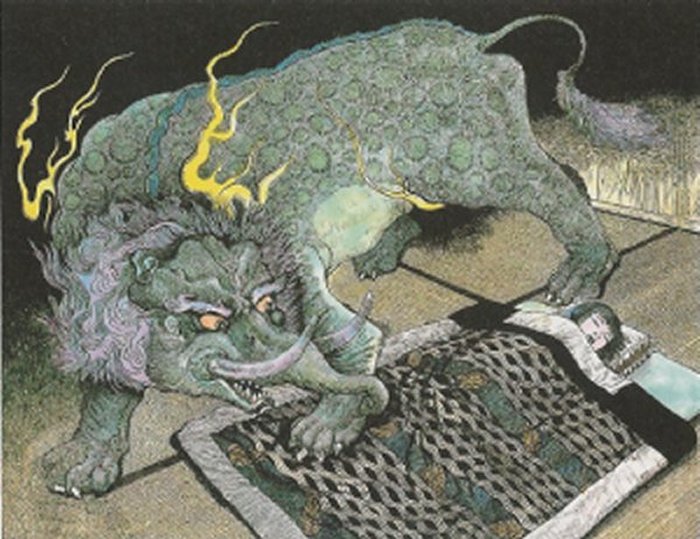
When a child in Japan wakes shaking from a nightmare, she knows what to do. Hugging her face in her pillow, she whispers three times “Baku-san, come eat my dream. Baku-san, come eat my dream. Baku-san, come eat my dream.” If her request is granted, the monstrous Baku will come into her room and suck the bad dream away.
There have been various ways of summoning the baku.
In Fukushima it is said that if, after awaking from a bad dream, you say “I give this dream to the baku,” then that dream will never trouble you again.
In other prefectures, you repeat “Baku-san, come eat my dream” three times in a row to summon to baku to come and eat your nightmares.
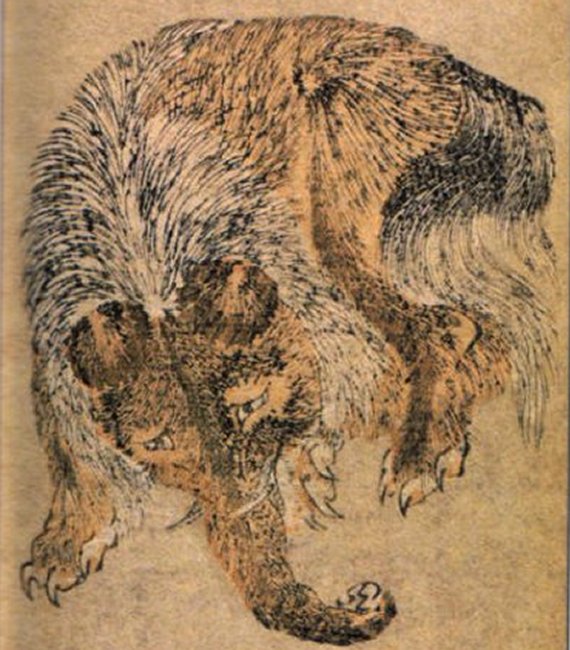
Still one must keep in mind that a Baku cannot and should not be summoned without caution.
It is believed that a Baku that is really hungry might not be satiated with a single dream and might suck away her hopes and ambitions along with it, leaving her hollow.
An early 17th-century Japanese manuscript, the Sankai Ibutsu depicts Baku as a Chinese mythical chimera with an elephant’s trunk, rhinoceros eyes, an ox tail, and tiger paws, which in belief protected against pestilence and evil, although eating nightmares was not included among its abilities.
However, in a 1791 Japanese wood-block illustration, a specifically dream-destroying Baku is depicted with an elephant’s head, tusks, and trunk, with horns and tiger’s claws. The elephant’s head, trunk, and tusks are characteristic of Baku portrayed in classical era (pre-Meiji) Japanese wood-block prints and in shrine, temple, and netsuke carvings.
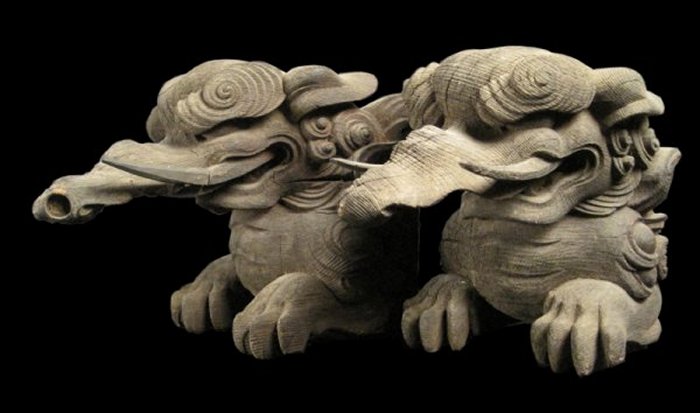
While they are wildly stylized, baku resemble the Asian tapir. And in fact, in Japanese, they share the same name and kanji.
The baku is not alone in this; the word kirin is not only Japanese for giraffe but also a mythical Chinese monster.
Which came first-the legend or the animal-is hidden in the past, with no solid agreement on either side. Many say that the two are unconnected, and that the similar appearance is pure coincidence, with the animal being named after the legend. Some say a wayward sailor drifted to Malaysia, and came back with stories of a massive creature that was transformed by legend.
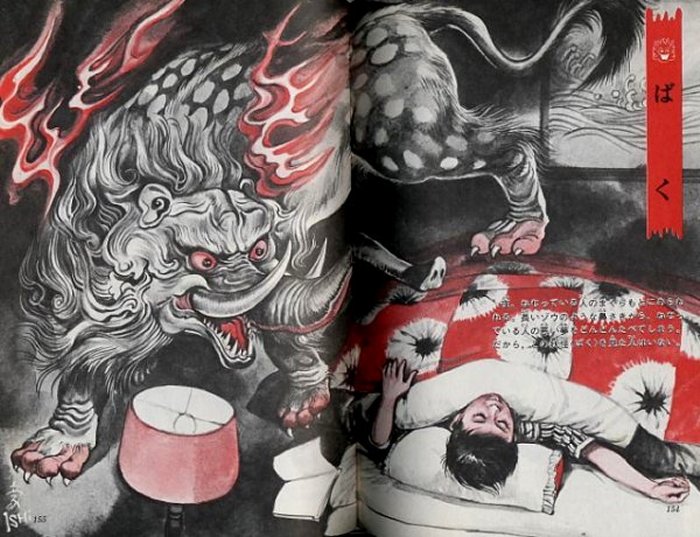
Baku is often confused with another Chinese legendary animal, the hakutaku (called a bai ze in Chinese). In fact, at Gobyakukan-ji temple in Tokyo, there is a statue called the Baku King, which was originally a statue of a hakutaku.
Carvings of Baku can be seen on temples in Japan. It remains unclear whether the Baku existed in ancient times or if the creature is purely mythological, but the creature is still very much alive in the mind of modern people.
A provocative thought is that Baku was once in the past a real being that possessed supernatural powers and could affect peoples’ thoughts, dreams, and consciousness.
Written by – A. Sutherland – MessageToEagle.com Senior Staff Writer
Copyright © MessageToeagle.com All rights reserved. This material may not be published, broadcast, rewritten or redistributed in whole or part without the express written permission of MessageToeagle.com
Related Posts
-
 Inside Eisinga Planetarium – World’s Oldest Working Planetarium – Built To Stop Doomsday Prophecies
No Comments | Nov 25, 2015
Inside Eisinga Planetarium – World’s Oldest Working Planetarium – Built To Stop Doomsday Prophecies
No Comments | Nov 25, 2015 -
 The Brujo De Chiloé – The Wild Warlocks Of The Chiloé Archipelago
No Comments | May 9, 2022
The Brujo De Chiloé – The Wild Warlocks Of The Chiloé Archipelago
No Comments | May 9, 2022 -
 Beautiful Legends Of The Great Smoky Mountains: The Cherokee’s Little People Nunnehi And The Medicine Lake Ataga’hi
No Comments | Sep 12, 2024
Beautiful Legends Of The Great Smoky Mountains: The Cherokee’s Little People Nunnehi And The Medicine Lake Ataga’hi
No Comments | Sep 12, 2024 -
 Great Attractor: Mysterious Gravitational Anomaly Beyond Hydra-Centaurus Supercluster
No Comments | Jun 4, 2017
Great Attractor: Mysterious Gravitational Anomaly Beyond Hydra-Centaurus Supercluster
No Comments | Jun 4, 2017 -
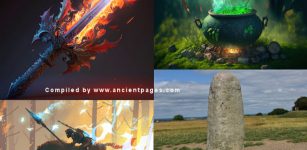 Four Magical Treasures Of Tuatha De Danann
No Comments | Jan 26, 2023
Four Magical Treasures Of Tuatha De Danann
No Comments | Jan 26, 2023 -
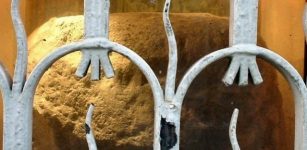 Legendary And Mysterious Stone Of Brutus – The London Stone Refuses To Give Up Its Secrets
No Comments | Jan 22, 2022
Legendary And Mysterious Stone Of Brutus – The London Stone Refuses To Give Up Its Secrets
No Comments | Jan 22, 2022 -
 Kuuk Thaayorre Language Uses Cardinal-Direction To Define Space
No Comments | Jan 28, 2016
Kuuk Thaayorre Language Uses Cardinal-Direction To Define Space
No Comments | Jan 28, 2016 -
 Ryujin: Benevolent And Righteous Dragon-King And Sea God In Japanese Legends
No Comments | Aug 12, 2024
Ryujin: Benevolent And Righteous Dragon-King And Sea God In Japanese Legends
No Comments | Aug 12, 2024 -
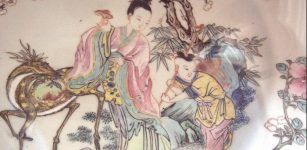 Goddess Xi Wangmu (Xiwangmu) Who Controlled Life, Death, Creation And Talked Directly To Humans In Chinese Mythology
No Comments | Mar 12, 2020
Goddess Xi Wangmu (Xiwangmu) Who Controlled Life, Death, Creation And Talked Directly To Humans In Chinese Mythology
No Comments | Mar 12, 2020 -
 Ancient And Modern History Of Monsters: What Role Did These Creatures Play In Our Society?
No Comments | Dec 16, 2015
Ancient And Modern History Of Monsters: What Role Did These Creatures Play In Our Society?
No Comments | Dec 16, 2015
